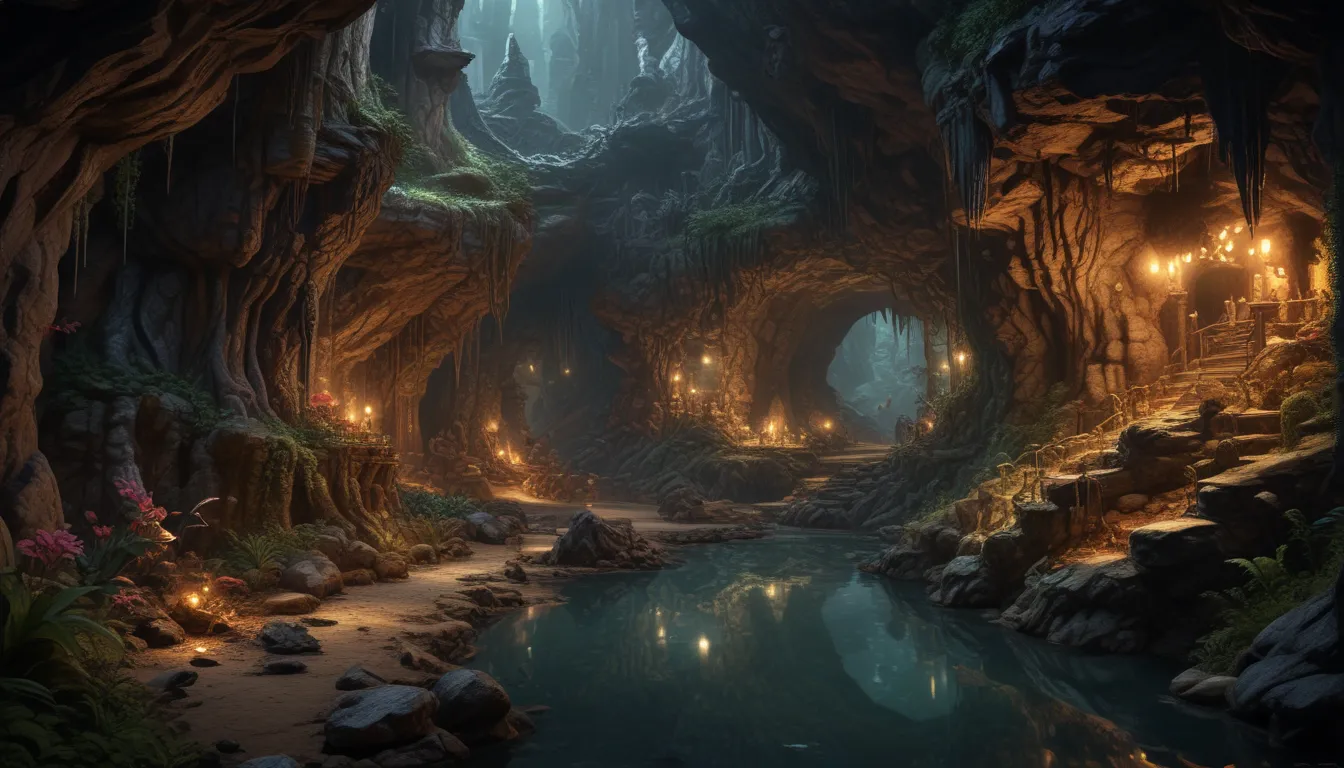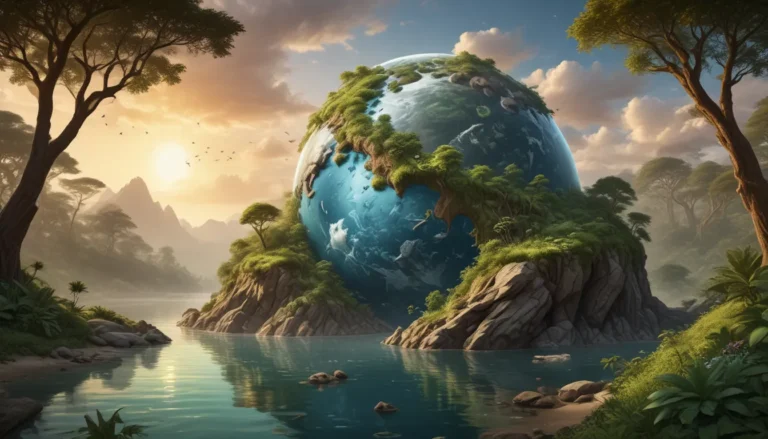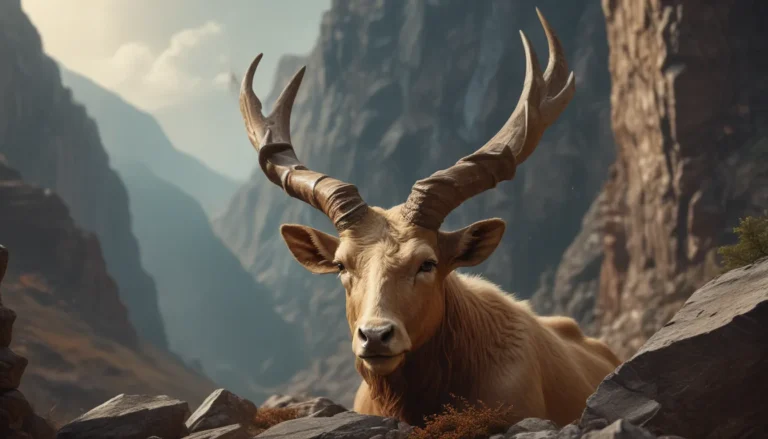A Note About Images: The images used in our articles are for illustration purposes only and may not exactly match the content. They are meant to engage readers, but the text should be relied upon for accurate information.
When it comes to natural wonders, few can rival the breathtaking beauty and mystery of caverns. These underground marvels hold a vast array of secrets and fascinating features that continue to captivate adventurers and scientists alike. From stunning rock formations to unique ecosystems, caverns offer an intriguing glimpse into the ancient history of our planet.
In this article, we will delve into 20 unbelievable facts about caverns that will leave you in awe. From the world’s largest cave to the deepest underground chambers, we will uncover remarkable details about these hidden treasures. So sit back, grab a flashlight, and get ready to explore the mesmerizing world of caverns.
Unveiling the Hidden Wonders of Caverns:
Caverns are natural wonders formed over thousands of years, home to unique ecosystems, ancient art, and even underground rivers, offering a glimpse into the Earth’s history and captivating visitors with their beauty. From the largest cavern in Vietnam to the deepest explored cave in Georgia, caverns hold mysteries, ancient art, and natural healing spaces, making them popular tourist attractions and offering a unique adventure for explorers of all kinds.
The Largest Cavern in the World:
The title for the largest known cavern in the world goes to the Son Doong Cave in Vietnam. It stretches over 5.5 miles in length and is home to its own jungle and river.
The Deepest Explored Cave:
Krubera Cave, located in Abkhazia, Georgia, holds the record for being the deepest explored cave. It reaches a depth of 7,208 feet (2,197 meters).
The Mysteries of Caverns Unveiled:
- Caverns Formed by Nature: Caverns are formed naturally over thousands of years through the process of erosion and dissolution. Water, wind, and chemical processes slowly carve out these immense underground chambers.
- A Natural Air Purifier: Caverns are often admired for their pristine air quality. The underground environment acts as a natural air purifier, filtering out pollutants and providing a source of clean, fresh air.
- Home to Unique Ecosystems: Caverns support diverse ecosystems that are uniquely adapted to the dark and often extreme conditions. These ecosystems can include underground rivers, rare species of plants, and even blind cave-dwelling animals.
The Marvels Within Caverns:
- The World’s Longest Underground Stalactite: Located in the Jeita Grotto caves in Lebanon, the world’s longest known stalactite measures over 27 feet (8.2 meters).
- The Underground is Full of Sparkle: Many caverns are adorned with stunning formations of crystals, including stalactites, stalagmites, and delicate calcite formations, creating a truly magical sight.
- Caverns Hide Ancient Art: Throughout history, humans have used caverns as canvases for their artistic expressions. Ancient cave paintings, such as the Lascaux Cave paintings in France, are testaments to the creative spirit of our ancestors.
Delving into the Enchanting Depths:
- Caverns as Natural Time Capsules: Caverns often preserve artifacts and fossils for thousands of years, providing valuable insights into past civilizations and the Earth’s history.
- The World’s Largest Ice Cavern: The Eisriesenwelt Ice Cave in Austria holds the title for being the largest ice cave in the world. Visitors can explore this frozen wonderland and marvel at the dazzling ice formations.
- The Mystery of Underground Rivers: Caverns are often connected to intricate underground river systems, some of which are yet to be fully explored and understood.
Discovering the Rich History of Caverns:
- Caves That Glow in the Dark: Glowworm caves, like the Waitomo Caves in New Zealand, feature a breathtaking natural phenomenon called bioluminescence. Thousands of tiny glowworms light up the darkness, creating a mesmerizing spectacle.
- The Oldest Cave Paintings in the World: The cave paintings found in the Chauvet-Pont-d’Arc Cave in France are believed to be over 30,000 years old, making them the oldest known cave paintings in existence.
- Caverns as Natural Sanctuaries: Caverns have been used throughout history as natural sanctuaries and hiding places. In times of conflict or persecution, people sought refuge in these hidden underground chambers.
Unraveling the Geological Wonders:
- The Mystery of Cave Formations: The intricate formations found in caverns, such as helictites and cave pearls, continue to perplex scientists and spark curiosity about the geological processes that create them.
- Underground Concert Halls: Certain caverns have exceptional acoustics, making them perfect venues for underground concerts and musical performances. The Postojna Cave Concert Hall in Slovenia is just one example of this unique blend of nature and music.
- Cavern Diving Adventures: Exploring underwater caverns through the thrilling activity of cavern diving offers divers a chance to witness stunning rock formations and encounter unique marine life in these hidden underwater realms.
Unlocking the Healing Properties:
- Caverns as Natural Healing Spaces: For centuries, people have believed in the healing properties of cave environments. Speleotherapy, a form of therapy involving spending time in caves, is believed to have respiratory and stress-relieving benefits.
- Lost Worlds Within Caverns: There are countless caverns around the world that remain unexplored, holding the potential for exciting discoveries and unknown wonders. Who knows what hidden realms await in the depths of these uncharted caverns?
Embracing Caverns as Unique Destinations:
- Caverns as Tourist Attractions: Caverns have captivated the imagination of tourists worldwide and have become popular destinations for those seeking adventure, awe-inspiring scenery, and a glimpse into the mysteries of the Earth’s underground.
Unlocking the Secrets of Caverns:
These 20 unbelievable facts about caverns showcase the immense beauty, geological wonders, and rich history that lie beneath the surface. From the largest caverns to the deepest explored caves, each one offers a unique experience and a chance to witness nature’s remarkable creations. Whether you are an adventure seeker, a history enthusiast, or simply curious about the world around you, exploring these caverns is sure to leave you in awe.
Continuing the Journey Through Caverns:
Caverns hold countless wonders waiting to be explored. From the stunning formations of Carlsbad Caverns to the iconic music history at The Cavern Club, these underground marvels captivate adventurers and enthusiasts alike. For those seeking even more awe-inspiring experiences, Barbican Hall offers a unique blend of architectural grandeur and cultural significance. Each destination promises unforgettable moments that will leave you craving more. So why not continue your journey through these remarkable caverns and halls? Click the links below to uncover the astounding facts and captivating stories that await you.
Conclusion:
In conclusion, caverns are truly fascinating and enigmatic natural wonders. They have captivated the human imagination for centuries and continue to do so with their breathtaking beauty and hidden secrets. Exploring caverns not only provides us with a thrilling adventure but also offers valuable insights into the ancient history of our planet. Whether you’re spelunking in stalactite-filled caves or marveling at the stunning underground landscapes, a journey into a cavern is sure to leave you in awe. So, next time you have the opportunity, step into the depths and uncover the wonders that lie beneath the surface of our planet.
FAQs:
-
What is a cavern?
A cavern is a naturally formed underground chamber or series of chambers that is typically created through the chemical dissolution of limestone or other soluble rocks. -
How are caverns formed?
Caverns are formed over thousands or millions of years as water seeps through cracks in the rock, dissolving the soluble minerals and creating hollow spaces underground. -
Are all caverns the same?
No, caverns can vary greatly in size, shape, and geological formations. Each cavern has its own unique characteristics, making them distinct from one another. -
Are caverns only found in limestone?
While limestone is the most common rock type for cavern formation, they can also be found in other types of soluble rock such as gypsum and dolomite. -
Can you visit caverns?
Yes, many caverns are open to the public for exploration. Guided tours are often available, providing a safe and informative way to experience the wonders of these underground marvels. -
Are caverns important for the environment?
Absolutely! Caverns play a crucial role in environmental conservation. They provide habitats for various species, including unique cave-dwelling creatures that are specially adapted to life in the dark. -
Can you find fossils in caverns?
Yes, fossilized remains of ancient animals have been discovered in many caverns around the world. These fossils can provide valuable insights into the past biodiversity and evolution of life on Earth. -
Are there any dangers in visiting caverns?
While visiting caverns can be an amazing experience, it’s important to follow safety guidelines and listen to the instructions of trained guides. Caverns can have slippery surfaces, low-light conditions, and uneven terrain, so caution is advised. -
Can you go camping in caverns?
No, camping is generally not permitted inside caverns due to safety concerns and the need to preserve these delicate ecosystems. -
How can I learn more about caverns?
There are many resources available, including books, documentaries, and online sources, that provide in-depth information about caverns. Additionally, visiting a cavern and participating in guided tours can offer a firsthand educational experience.
Was this page helpful?
Our commitment to delivering trustworthy and engaging content is at the heart of what we do. Each fact on our site is contributed by real users like you, bringing a wealth of diverse insights and information. To ensure the highest standards of accuracy and reliability, our dedicated editors meticulously review each submission. This process guarantees that the facts we share are not only fascinating but also credible. Trust in our commitment to quality and authenticity as you explore and learn with us.






